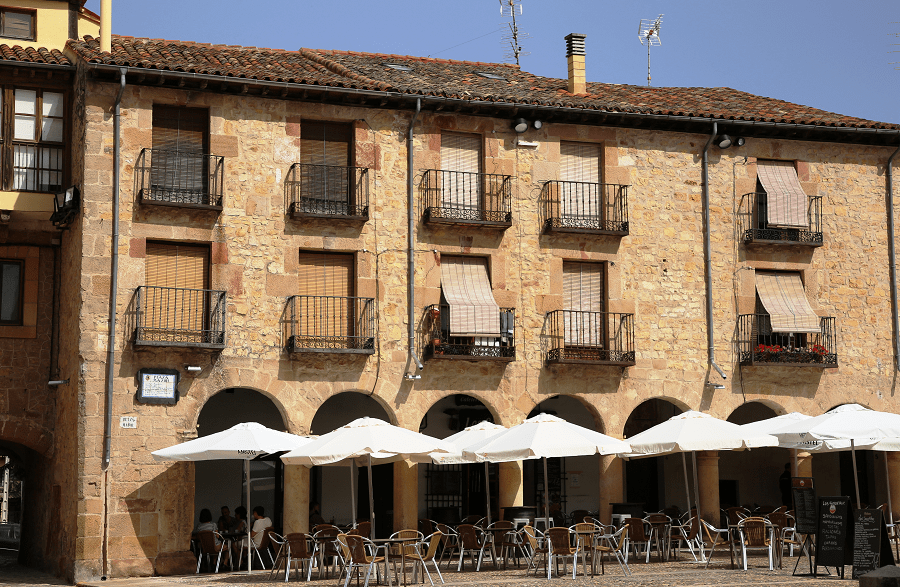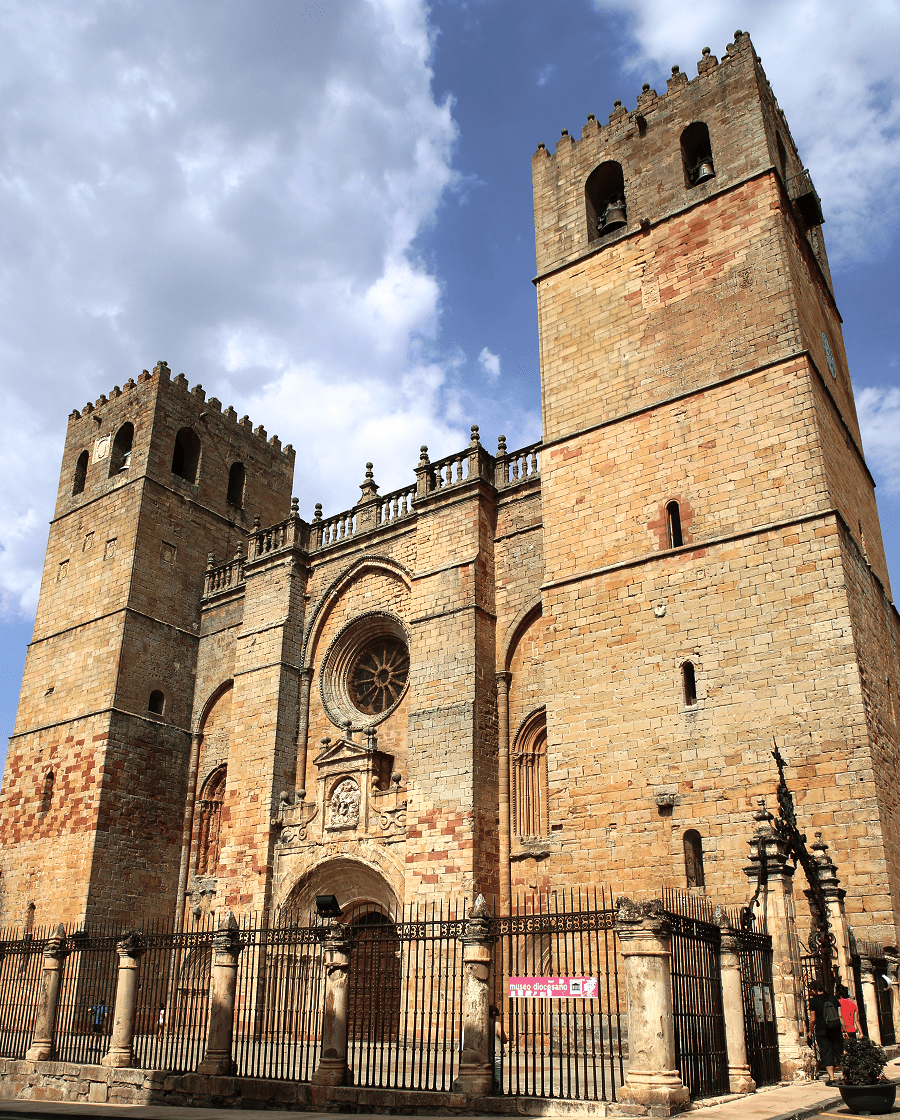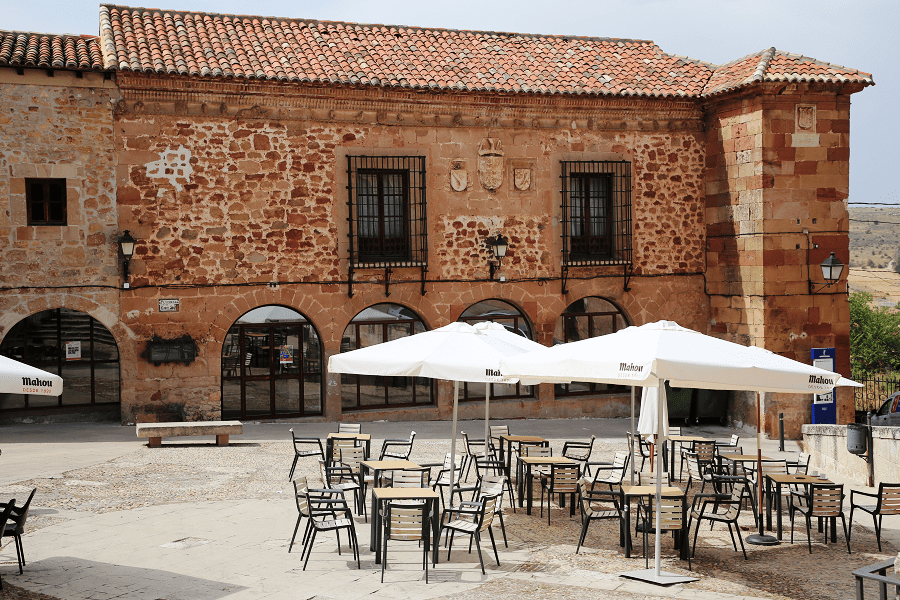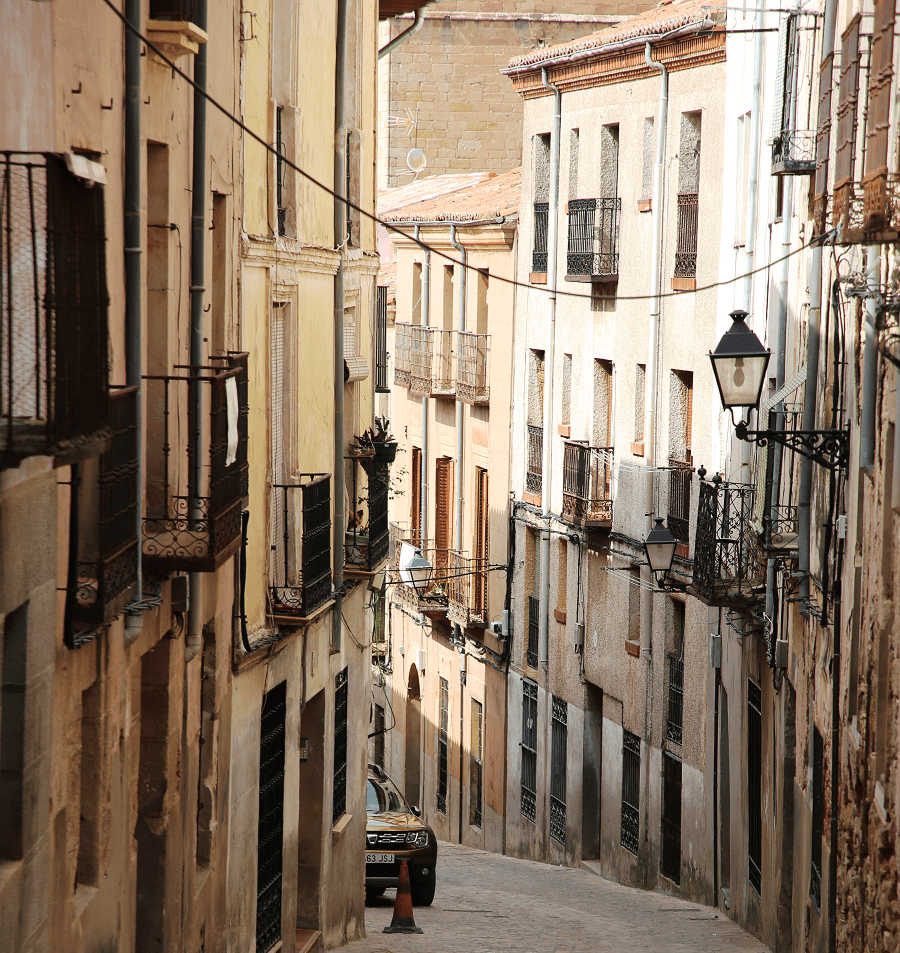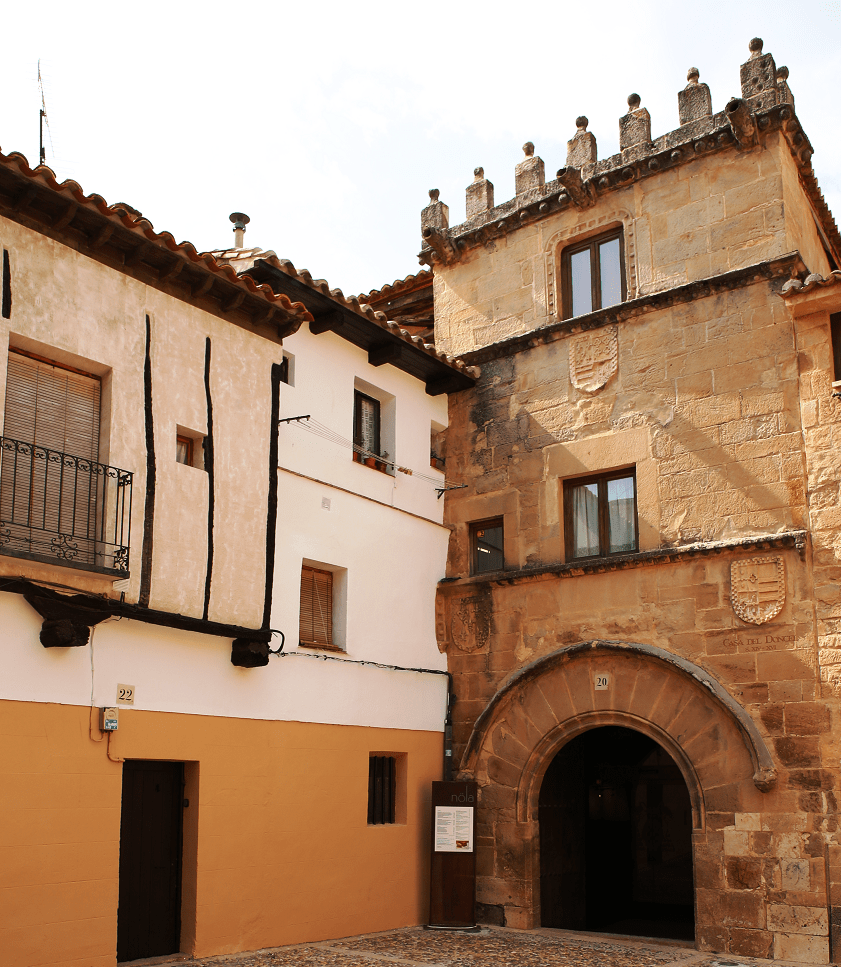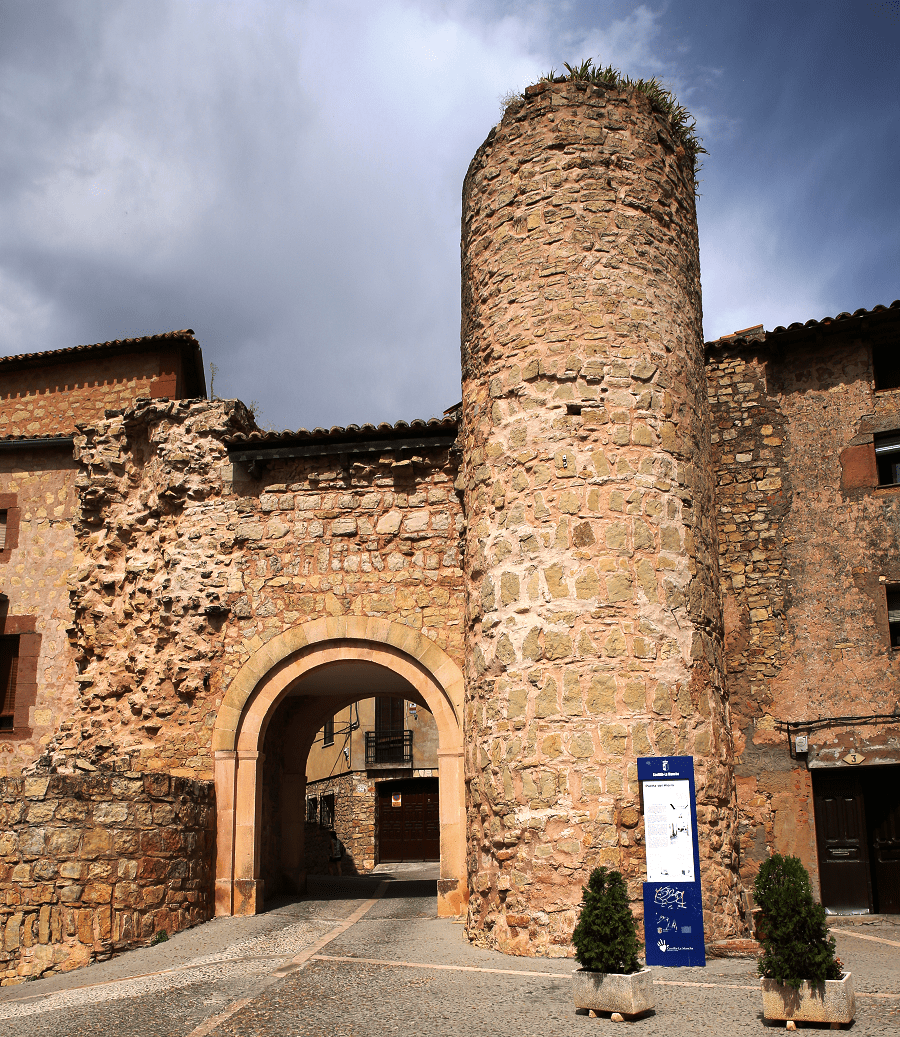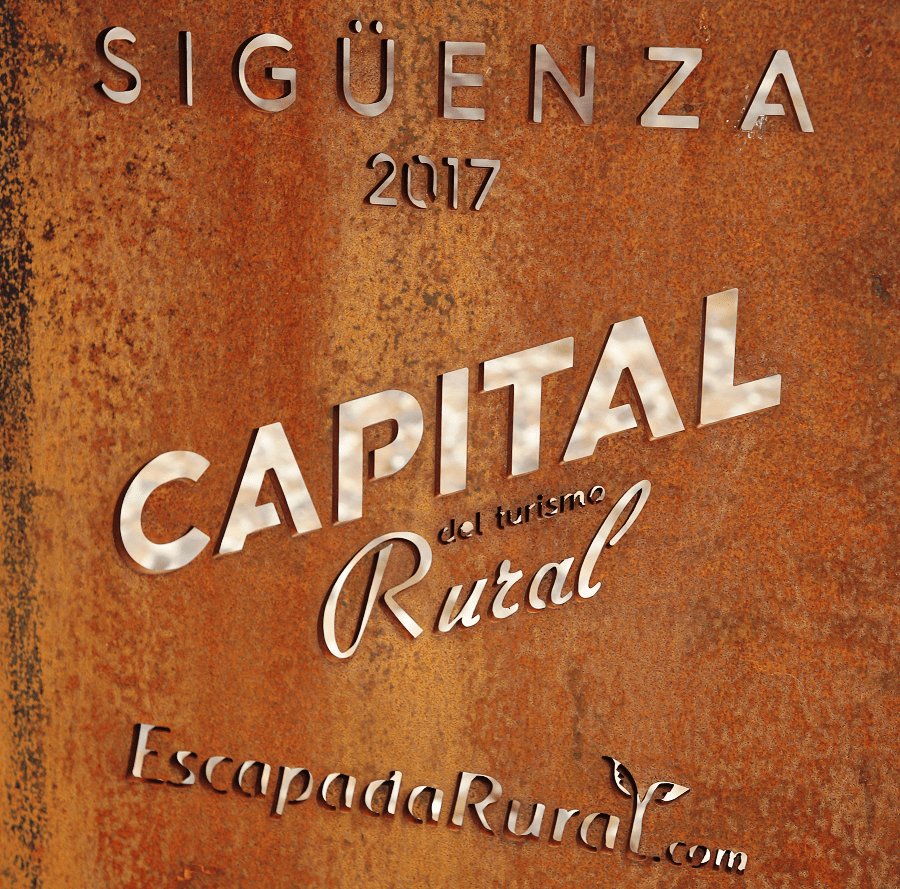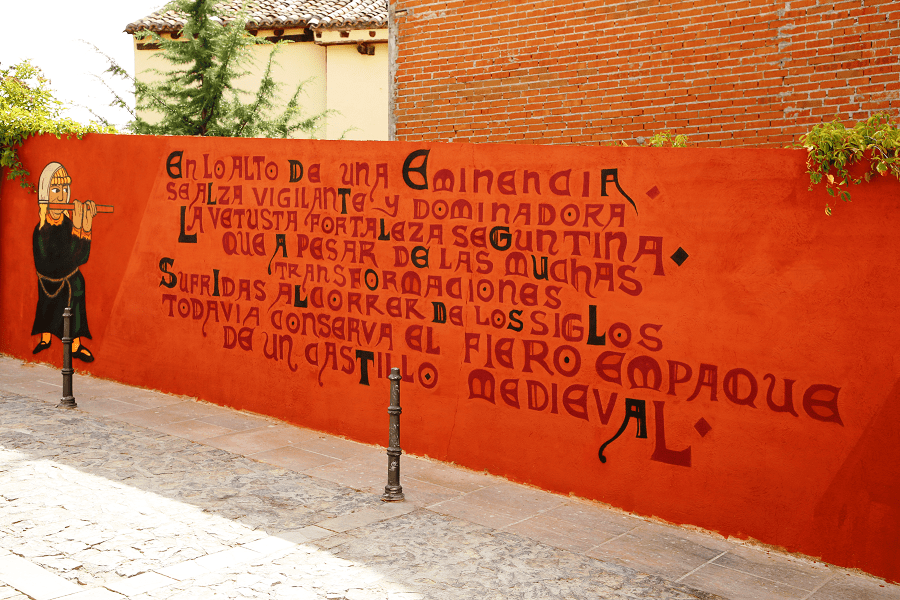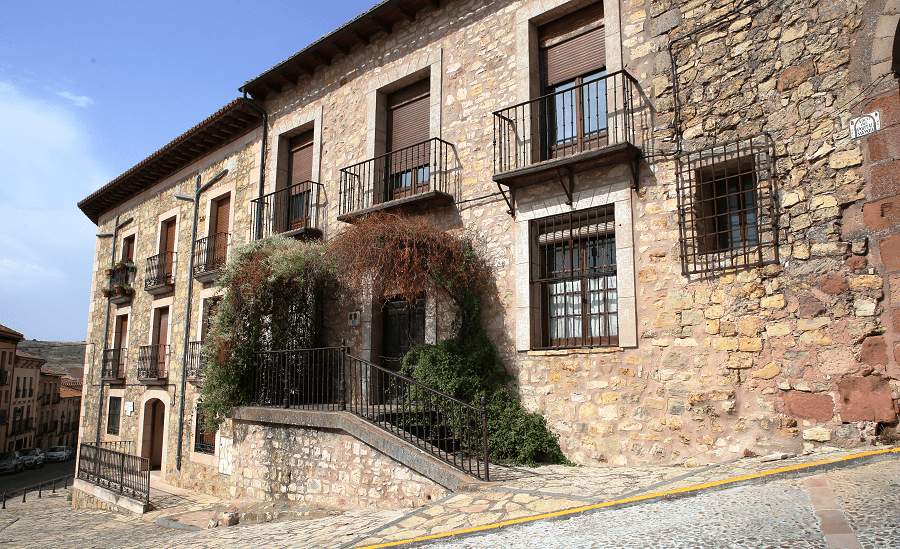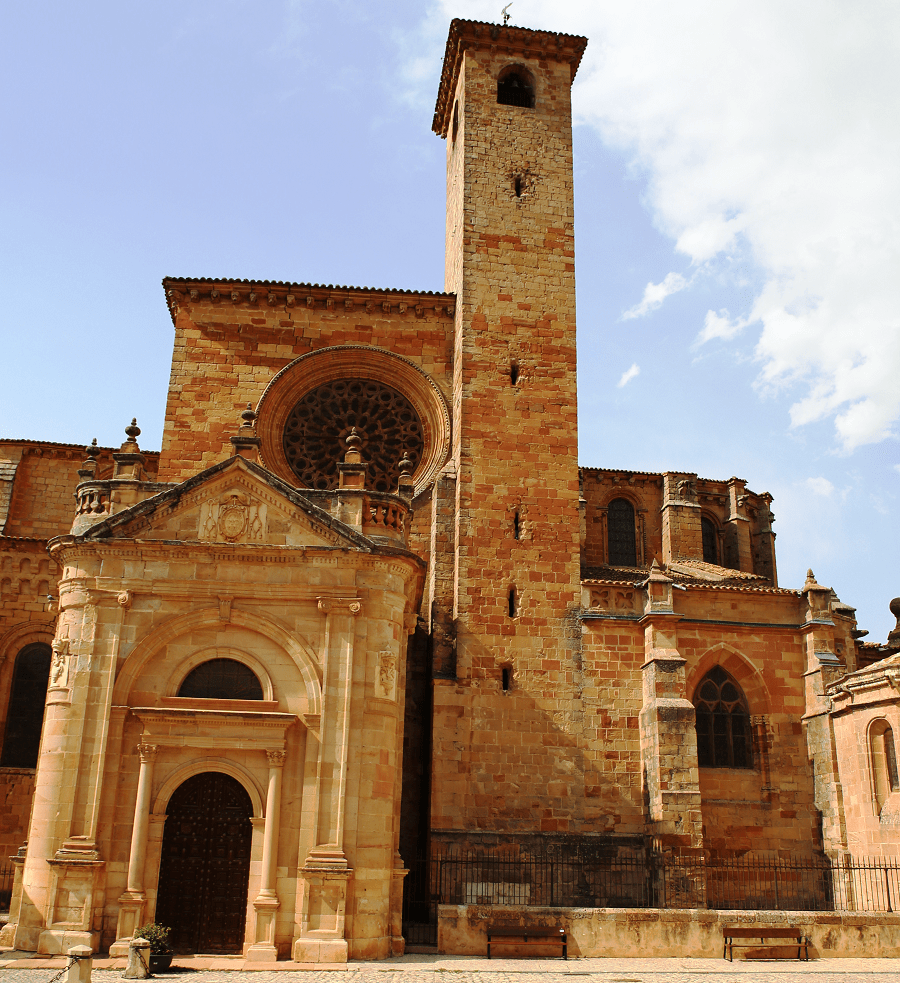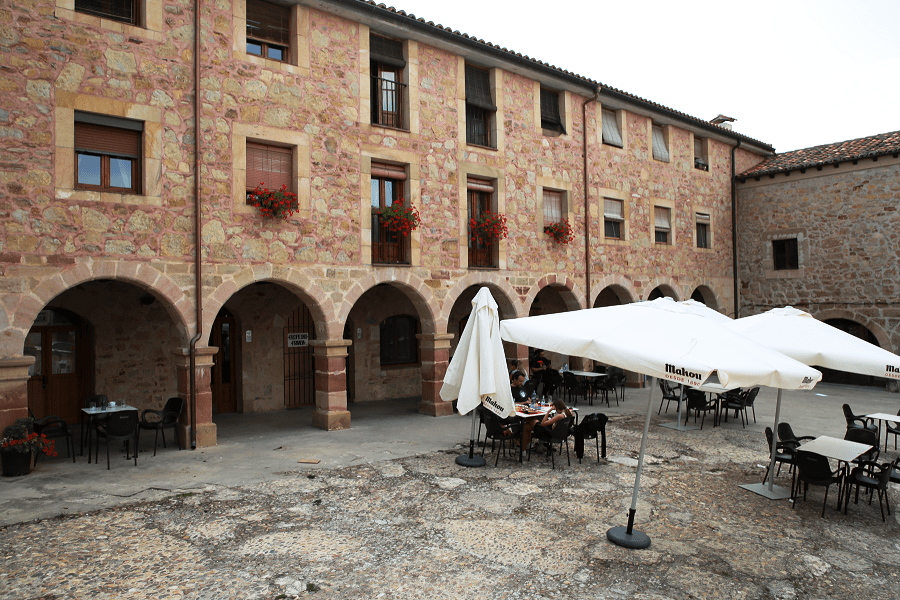Sigüenza is a city in the Serranía de Guadalajara comarca, province of Guadalajara, Castile-La Mancha, Spain.
Tourism and main attractions
The city was declared a historic-artistic complex – antecedent to the figure of property of cultural interest – on May 20, 1965.
Among its important monuments, the cathedral, an authentic and valuable museum, already included in the Monumental Catalog of Spain, and the castle, fortress palace, residence of the bishops until the middle of the 19th century, stand out.
In addition, churches such as those of Santiago and San Vicente, Romanesque; its Plaza Mayor, ordered by Cardinal Mendoza and one of the most typical in Castile; the Municipal House, the Episcopal Palace, the small hermitage of Humilladero, the appreciable remains of the successive walled enclosures with some of their doors and towers; sectors such as the small Jewish quarter and Calle de las Travesañas.
Among the streets and squares of the urban area, the Callejón de los Infantes also stands out, presided over by the Palacio de los Infantes; Las Travesañas, which comprise the narrow streets of the medieval part of the city and which include the Plazuela de la Cárcel, the old medieval Plaza Mayor, around which the buildings of the old Town Hall, the prison and the Posada del Sol (today Taberna Gurugú de la Plazuela); the Plazuela de las Cruces; and the Baroque neighborhood of San Roque, where La Alameda, or the city’s main park, is located.
The cathedral is a large Gothic edifice of ashlar stone, the lower levels of which show that it was built onto an earlier Romanesque cathedral. Its façade has three doors, with a railed court in front.
At the sides rise two square towers, 164 feet high, built at different times, with merlons topped with large balls; these towers are connected by a balustrade which crowns the facade, the work of Bishop Herrera in the eighteenth century. The interior is divided into a nave and two aisles, in Gothic style.
The main choir begins in the transept with a Renaissance altar built by order of Bishop Mateo de Burgos.
In the transept is the Chapel of Saint Liberata (Librada), the female patron saint of the city, with a reredos and the relics of the saint, all constructed at the expense of Bishop Fadrique of Portugal, who is buried there.
With foundations dating back to the 5th century, Sigüenza Castle was extended by the Moors in the 8th century and retaken by the Christians under Bernard of Agen in 1123. In the late 18th century, Bishop Juan Díaz de la Guerra changed the appearance of the castle from a fortress into an episcopal palace with additional windows, balconies and stables.
However, in 1808 during the War of Spanish Independence the castle was taken by the French who seriously damaged it and looted all its riches before it was recaptured by El Empecinado.
The episcopal palace was further devastated by fire in the 1830s and had to be abandoned. In 1976, after comprehensive restoration, the castle was opened as a parador luxury hotel.
The official inauguration took place in 1978 with the visit of King King Juan Carlos and Queen Sofía. Decorated with banners and suits of armour, the huge lounge was originally the castle’s dining room.
The building of the College of San Antonio Portaceli of Sigüenza, which was later transformed into a university, was begun in 1476. Its founder was Don Juan López de Medina, archdeacon of Almazán, canon of Toledo and vicar-general of Sigüenza.
The papal bull ratifying the foundation, approving the benefices, etc., was granted by Sixtus IV in 1483, and courses were opened in theology, canon law and the liberal arts.
Festivals
- San Vicente Mártir, patron of the city (January 22)
- Summer patron saint festivities in honor of San Roque and the Virgen de la Mayor (mid-August)
- The second weekend of July the Medieval Days are celebrated
- Christmas celebrations are also notorious, especially for the popularity of their street “rondallas”.
- Holy Week, with various processions of great beauty, among which the Santo Entierro or “del Silencio”, on Good Friday at night stands out
- Santa Librada, former patron of the Diocese and the city of Sigüenza. July 20th.
Best restaurants
There are three Michelin list restaurants in the city:
- El Molino de Alcuneza, Carretera GU 128, 68 – 98 EUR • Modern Cuisine (One star)
- El Doncel, Paseo de la Alameda 3, 76 – 118 EUR • Modern Cuisine (One star)
- Nöla, Plaza de San Vicente, 28 – 48 EUR • Modern Cuisine
How to get to?
Railways: Madrid – Barcelona line.
From Madrid 1 hr 39 min (138 km) via A-2
From Guadalajara 48 min (73.7 km) via A-2 and CM-1101
From Toledo 2 hr 4 min (201 km) via A-42 and A-2
Main information
Area: 386 sq. km
GPS coordinates: 41°04′09″N 2°38′21″W
Language: Spanish
Population: 4 319
Currency: Euro
Visa: Schengen
Time: Central European UTC +1, in summer +2



